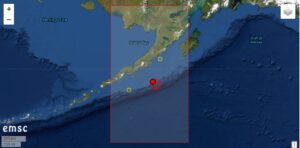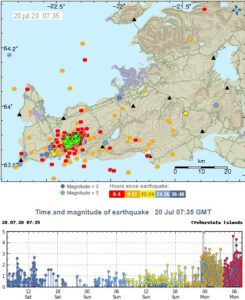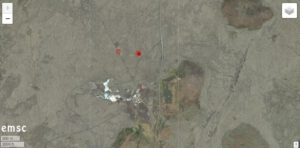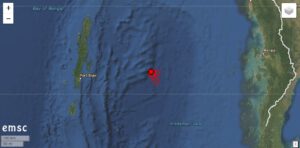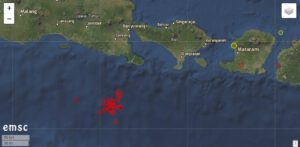 Yesterday an earthquake of magnitude 5.1 manifested itself off the southern coast of the Indonesian islands of Bali and Java, with the hypocenter at a depth of 56 km. The earthquake triggered a series of aftershocks, which were at a much lower depth of 10 km. Most of the aftershocks have magnitudes in the range of 3. The earthquakes are associated with the subduction along the Sundab Arc and are not directly related to the volcanism in the region.
Yesterday an earthquake of magnitude 5.1 manifested itself off the southern coast of the Indonesian islands of Bali and Java, with the hypocenter at a depth of 56 km. The earthquake triggered a series of aftershocks, which were at a much lower depth of 10 km. Most of the aftershocks have magnitudes in the range of 3. The earthquakes are associated with the subduction along the Sundab Arc and are not directly related to the volcanism in the region.
A few hundred kilometres further east, similar events occurred in the Sumbawa region. Here, too, numerous earthquakes reduce stresses in the earth’s crust, which are caused by subduction along the Sunda Arc. It can be assumed that there are also tensions in the area between these two spots waiting to be relieved. At any time strong earthquakes can occur at the Sunda Arc, which could even trigger tsunamis.
